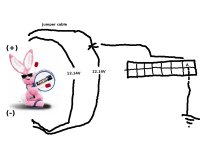vetteoz
Well-known member
If you had resistance then you have a short to ground somewhereI was using terminal A as the ground, with the positive on G. Using the probe that way I had resistance .
Not going to work , there is no voltage on Gbut no voltage.
check out the diagram I posted up ; G is a straight connection to pump when key is off with no power on it
terminal is only there for test purposes so you can put 12V on the pump to see if it works









